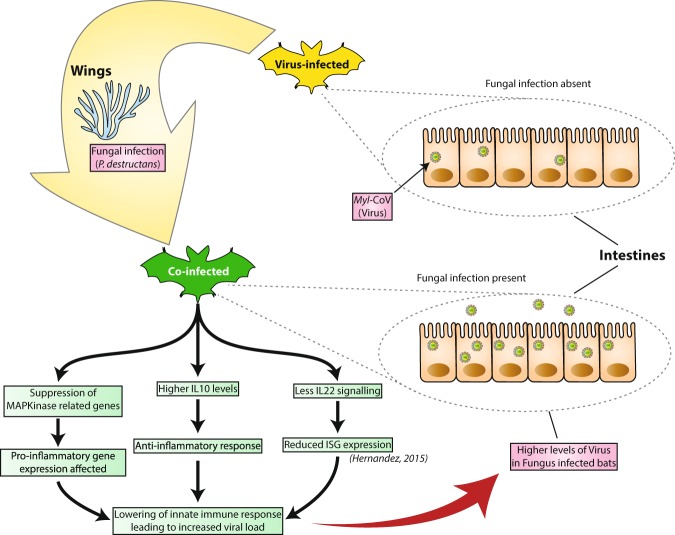Figure 5.
Hypothesized model of pathways involved in increased coronavirus shedding and white-nose syndrome (WNS) severity in little brown bats (Myotis lucifugus) co-infected with M. lucifugus coronavirus (Myl-CoV) and Pseudogymnoascus destructans. Diagram summarizes the changes observed by comparing co-infected bats with virus-infected bats. Bats with persistent Myl-CoV infection exhibit relatively low viral shedding. When bats are also infected with P. destructans (shown in yellow arrow) and develop WNS, the level of coronavirus increases. There is a change in the level of some immune genes, such as IL22, RERG and possibly IL10, which may have an effect on immune response and cell proliferation. The increase in coronavirus levels in co-infected bats is possibly due to the bats’ systemic response to WNS reducing innate anti-viral responses.

